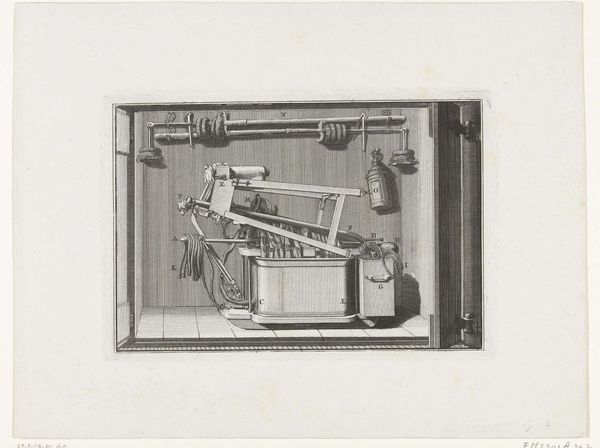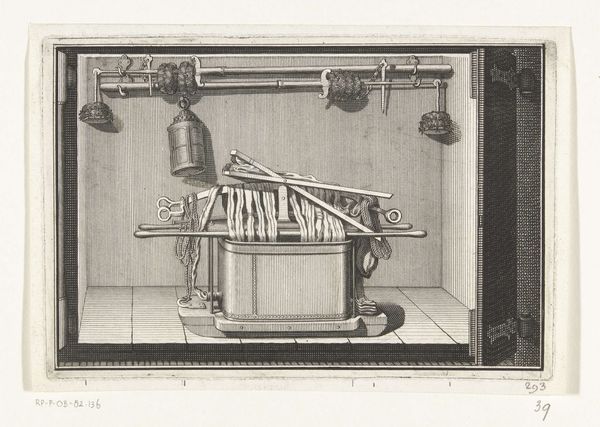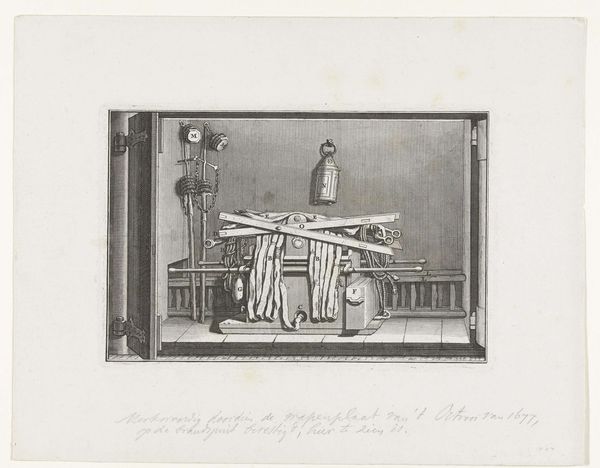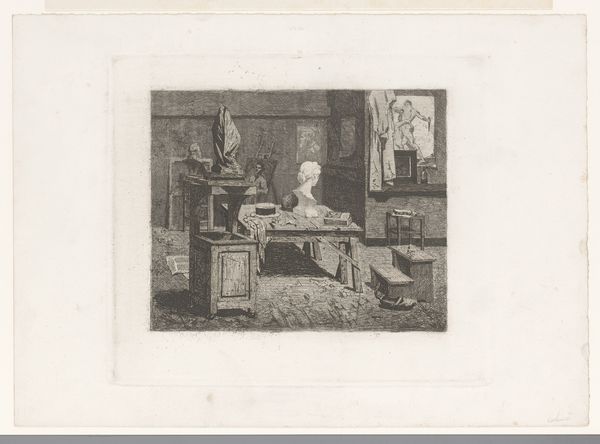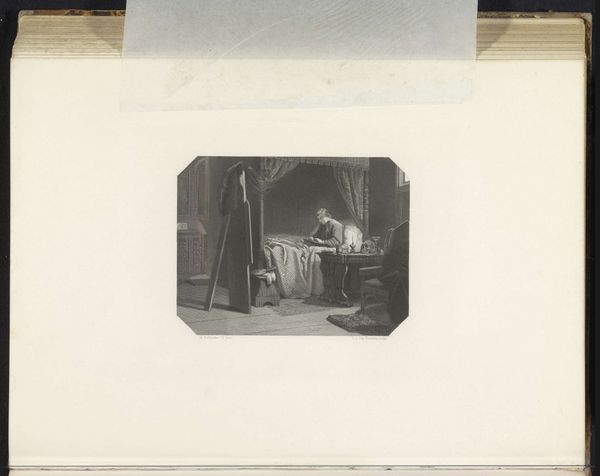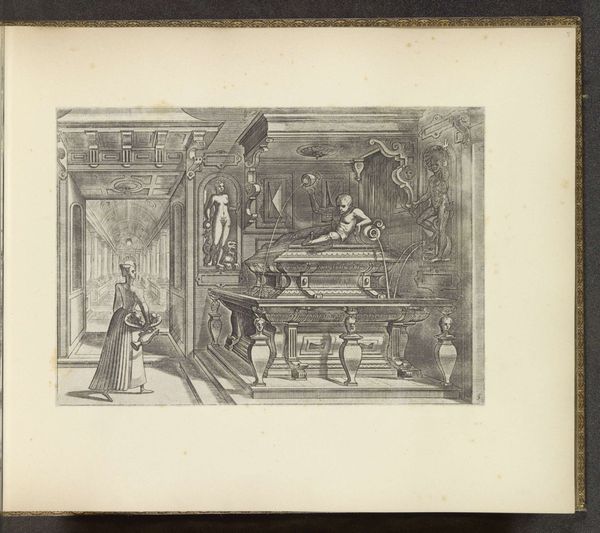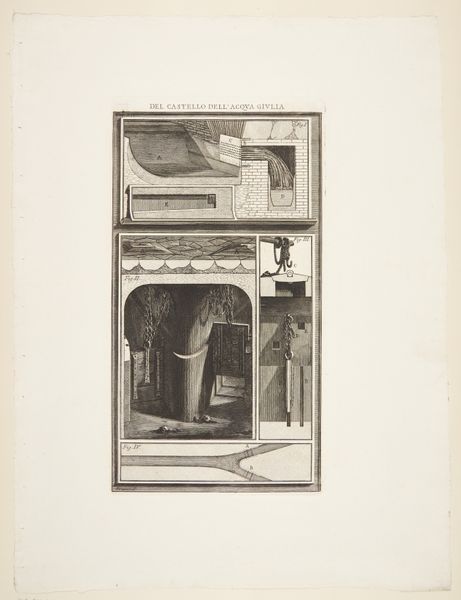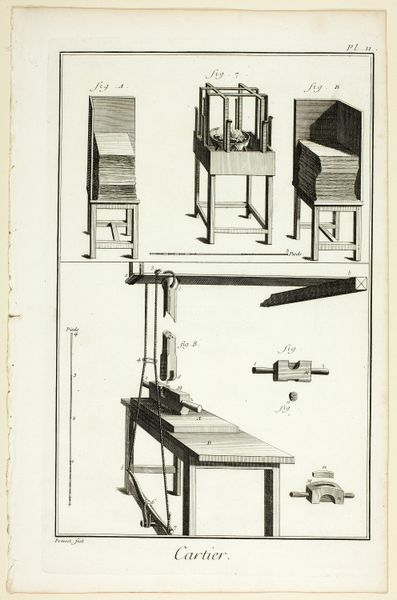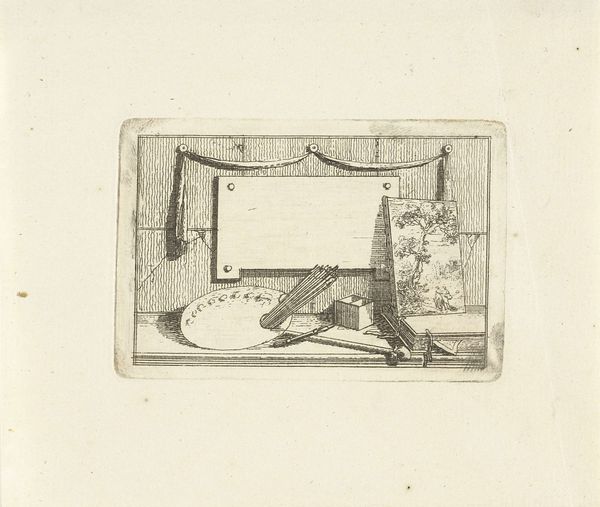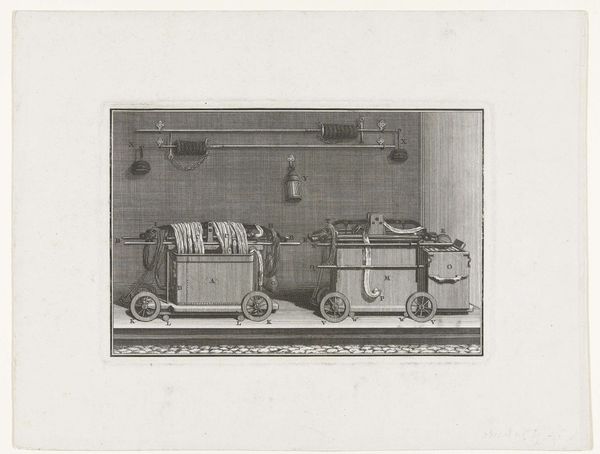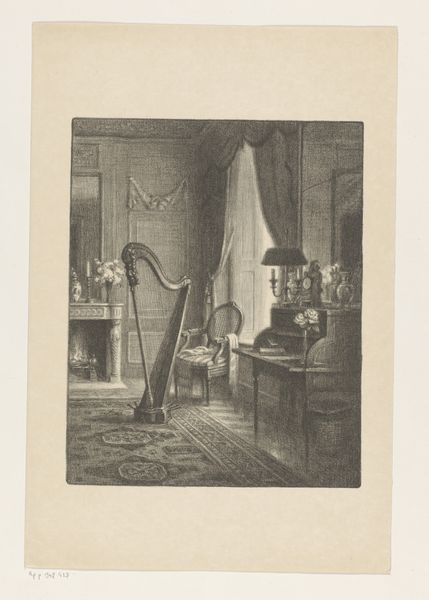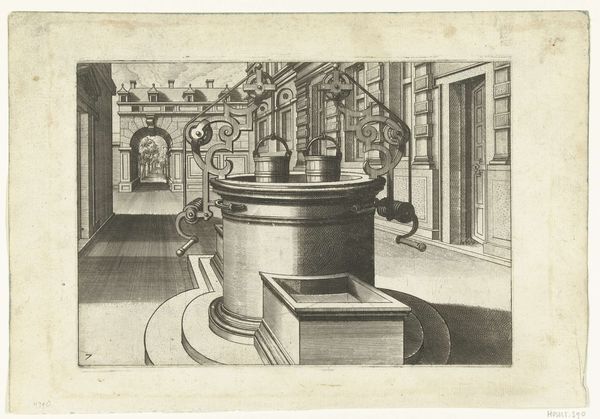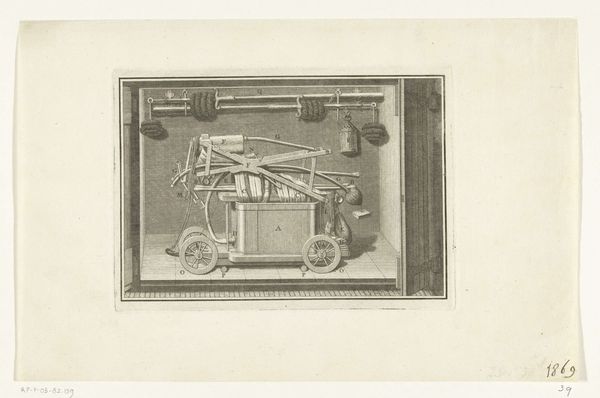
Hoe de slangbrandspuit en pomp in het brandspuithuisje opgeborgen dienen te worden na gebruik, ca. 1695 Possibly 1690 - 1882
0:00
0:00
drawing, print, engraving
#
drawing
# print
#
old engraving style
#
genre-painting
#
history-painting
#
engraving
Dimensions: height 140 mm, width 206 mm
Copyright: Rijks Museum: Open Domain
Curator: This engraving, of anonymous authorship, and potentially dating anywhere between 1690 and 1882, carries the title “Hoe de slangbrandspuit en pomp in het brandspuithuisje opgeborgen dienen te worden na gebruik, ca. 1695," which translates to "How the hose fire extinguisher and pump should be stored in the firehouse after use." Editor: The immediate impression is one of intense stillness. Everything is neatly arranged, almost clinically so. The textures, despite being rendered in engraving, appear tactile, particularly the coiled ropes and draped cloths. Curator: It is fascinating to see this snapshot of early fire safety practices. What does it tell us about the communities relying on these rudimentary technologies? Who were the individuals tasked with safeguarding their neighbors? Editor: The careful arrangement draws attention to the mechanics, wouldn’t you agree? See how the composition emphasizes the shapes and connections of the apparatus. It presents a systematic logic—a very orderly way of fighting fires, focusing almost robotically on function over form. Curator: Absolutely, but there's also a political dimension at play. Public safety is intrinsically linked to issues of governance, power, and class. The effectiveness, or lack thereof, of fire-fighting strategies deeply affects marginalized communities. It shows who is truly cared for. Editor: Indeed, look at how the crosshatching renders this calm light; the scene practically glows. It's like a celebration of the equipment itself! A true emphasis of shape. Curator: Though seemingly just an instructional diagram, I wonder about the people who operated this equipment. This image represents a piece of communal safety, potentially reflecting ideas of resilience. Editor: Focusing on pure aesthetic choices, I'm intrigued by the use of the print medium itself. Its black and white scheme gives an antiquated, archival look. This heightens the subject’s functional importance, presenting fire safety and a communal experience of potential dangers in stark, unvarnished terms. Curator: Considering the Rijksmuseum’s location in Amsterdam, a port city historically prone to devastating fires, understanding the implications and safety of its surrounding inhabitants become central to the understanding of this artifact. Editor: Studying it this way, focusing solely on art rather than purpose allows for greater creative, non-political interpretation. Thank you.
Comments
No comments
Be the first to comment and join the conversation on the ultimate creative platform.
